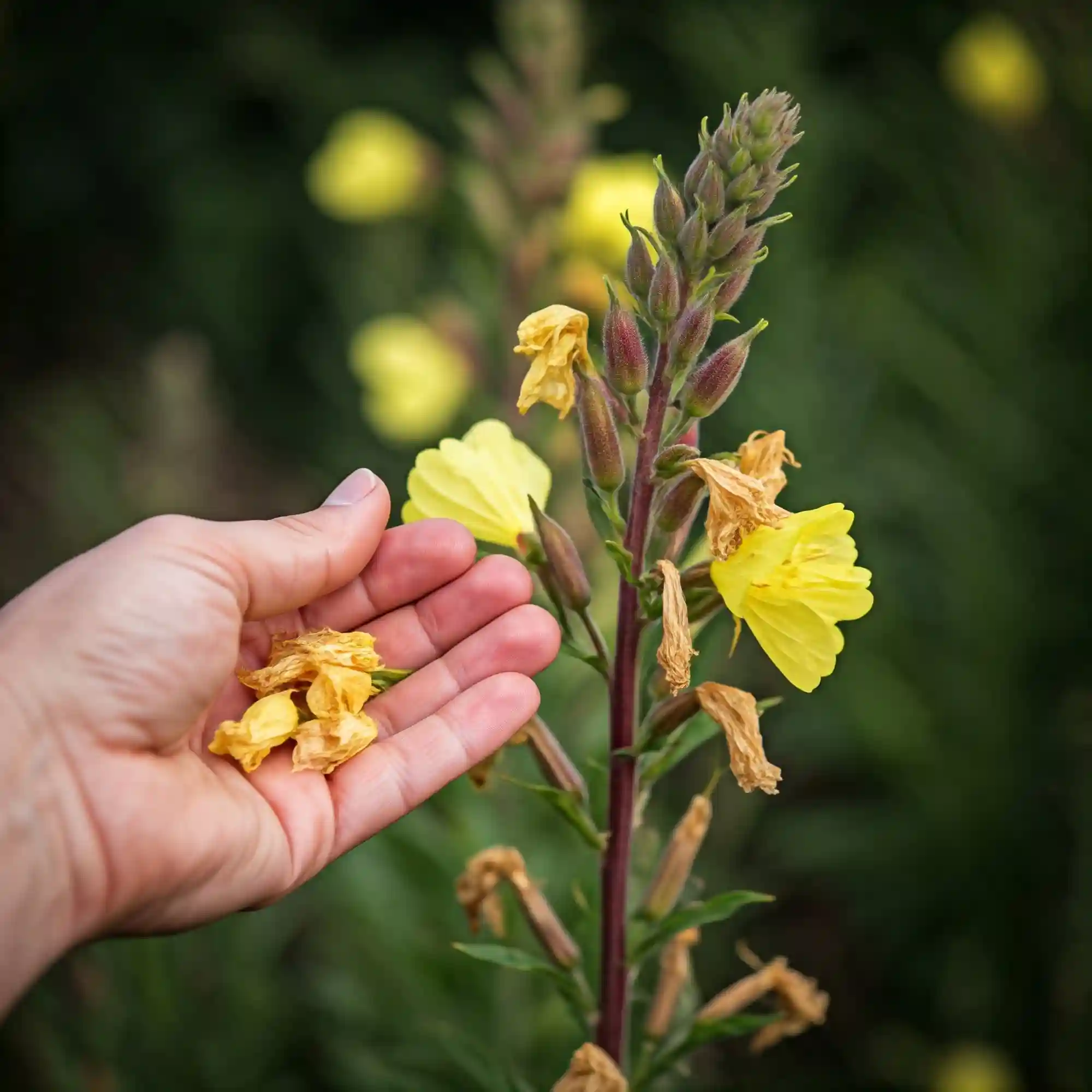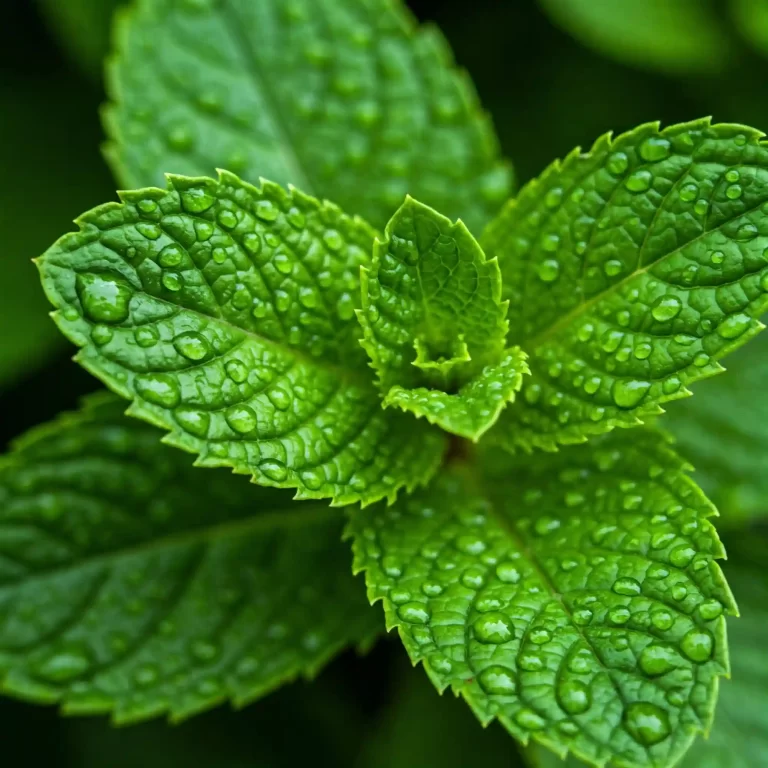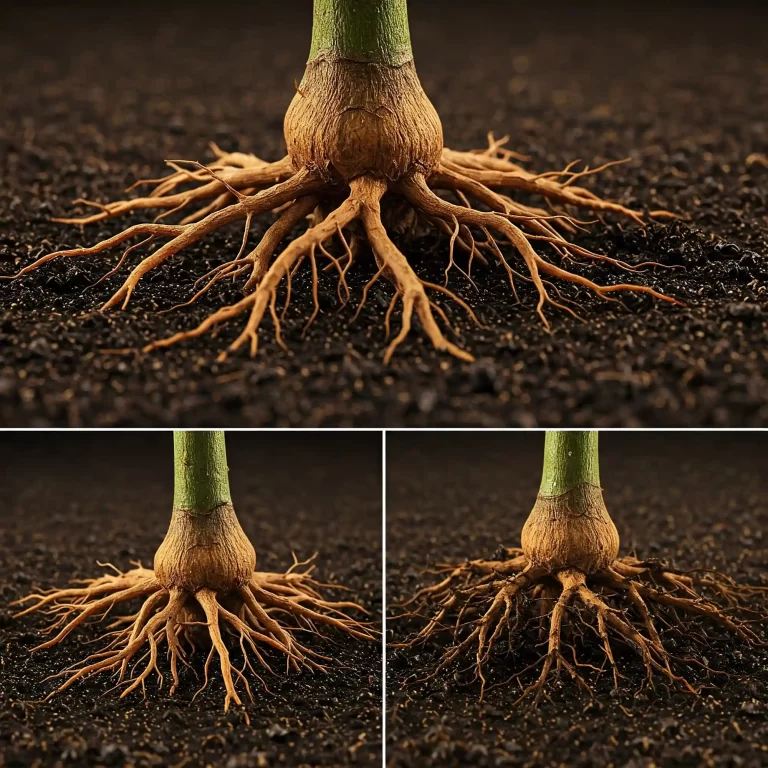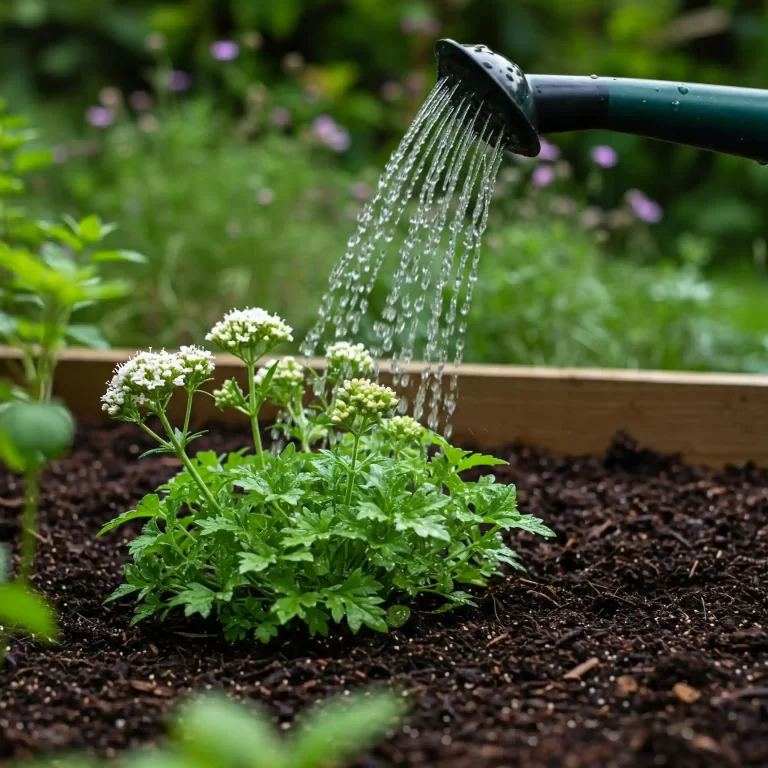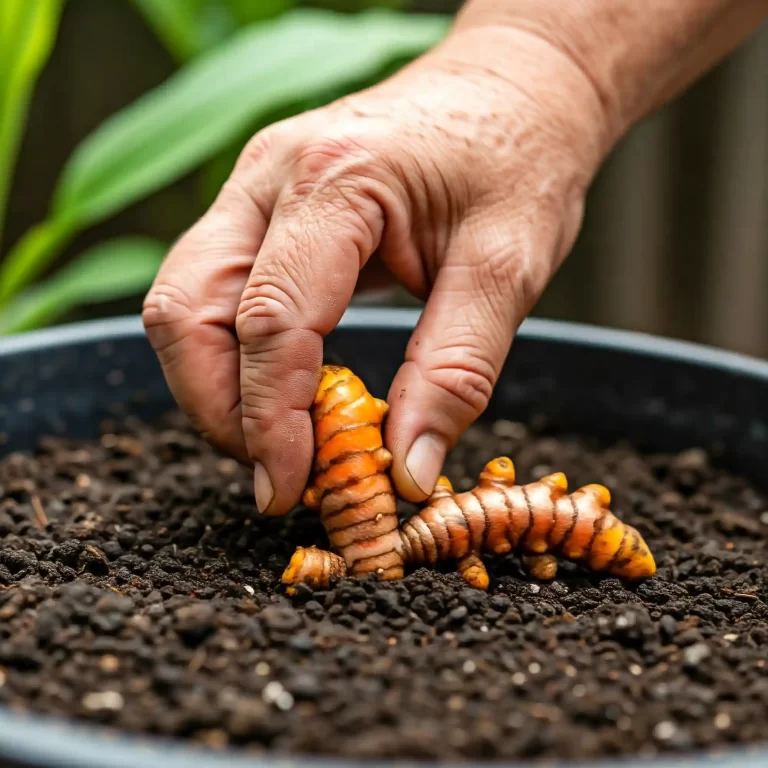How to Grow Evening Primrose Oil Herbs: A Gardener’s Guide
Are you fascinated by the potential health benefits of evening primrose oil but unsure where to start? Many people are drawn to its purported properties for skin health and hormonal balance, but the cost of commercially produced oil can be a barrier. I understand this, as I’ve been there myself. The solution? Growing your own evening primrose! This guide will empower you to cultivate these beautiful and useful herbs in your own garden, giving you a direct connection to this natural resource.
Understanding Evening Primrose: The Basics
Evening primrose (Oenothera biennis) is a fascinating plant with a rich history. As a gardener, I’ve always appreciated its delicate beauty and the unique way its flowers unfurl in the evening, releasing a subtle, sweet fragrance. You might be surprised to learn it’s native to North America, where it has long been used for various purposes by indigenous peoples. It’s categorized as a biennial, meaning it completes its life cycle in two years. In the first year, it focuses on vegetative growth, developing a rosette of leaves close to the ground. It’s in the second year when the magic truly happens: the tall flower stalks emerge, adorned with bright yellow blossoms that open at dusk. Some varieties are considered annuals.
Why Grow Evening Primrose?
Beyond its visual appeal, growing evening primrose offers several compelling reasons:
- Beauty: The flowers are a lovely addition to any garden, attracting pollinators like moths and bees.
- Potential Oil Benefits: The seeds are a source of gamma-linolenic acid (GLA), an omega-6 fatty acid that some believe offers various health benefits.
- Connection to Nature: There’s a special satisfaction in growing your own herbs, connecting you to the natural world and providing a sense of self-sufficiency.
Evening Primrose Varieties
While Oenothera biennis is the most common species grown for its oil, several varieties exist, each with slightly different characteristics. Some popular varieties include:
- Common Evening Primrose (Oenothera biennis): The most widespread variety, known for its tall stalks and bright yellow flowers.
- Missouri Evening Primrose (Oenothera macrocarpa): Features larger flowers and a more spreading habit.
- Showy Evening Primrose (Oenothera speciosa): Known for its delicate white or pink flowers.
Comparison of Evening Primrose Varieties
| Variety | Flower Color | Size | Growth Habit |
| Oenothera biennis | Yellow | Tall | Upright |
| Oenothera macrocarpa | Yellow | Large | Spreading |
| Oenothera speciosa | White/Pink | Medium | Spreading |
Understanding these basic facts about evening primrose is the first step to successfully growing this valuable herb. You’ll be well on your way to enjoying its beauty and potential benefits.
Starting from Seed: Indoor and Outdoor Methods
One of the most rewarding aspects of gardening, in my experience, is nurturing a plant from its earliest stages. With evening primrose, you have the option of starting seeds indoors or directly sowing them into your garden. Both methods have their advantages, and the best choice for you will depend on your climate and personal preferences. You should consider your local climate and the typical last frost date. Starting indoors gives you a head start, especially in colder regions with shorter growing seasons. Direct sowing is simpler but requires waiting until the soil has warmed up sufficiently.
When to Plant
Timing is crucial for successful evening primrose cultivation. If you’re opting for indoor starting, begin about 6-8 weeks before the last expected frost in your area. This usually falls around late winter or early spring. For direct sowing outdoors, wait until after the last frost has passed and the soil temperature has warmed to at least 60°F (15°C). This is generally in mid-spring. If you live in a warmer climate with mild winters, you can also sow seeds in the fall for blooms the following spring.
Indoor Seed Starting
Starting seeds indoors allows you to control the growing environment and get a jump on the season. Here’s how I approach it:
- Seed Starting Mix: Use a fine-textured, sterile seed starting mix. This prevents damping-off disease, a common problem that can kill young seedlings.
- Trays or Containers: Sow seeds in shallow trays or small pots with drainage holes.
- Sowing Depth: Sprinkle the tiny seeds on the surface of the soil and gently press them down. They need light to germinate, so don’t bury them too deeply.
- Light Requirements: Place the trays in a bright location, such as a sunny windowsill or under grow lights. Aim for about 12-16 hours of light per day.
- Germination Process: Keep the soil consistently moist but not waterlogged. Germination typically occurs within 10-14 days.
- Transplanting: Once the seedlings have developed a few sets of true leaves, they are ready to be transplanted into larger pots or directly into the garden.
Direct Sowing Outdoors
Direct sowing is a simpler method, especially if you live in a region with mild winters. Here are some tips:
- Preparing the Soil: Choose a location in your garden that receives full sun to partial shade. Prepare the soil by loosening it and amending it with compost or other organic matter to improve drainage.
- Sowing Depth: Similar to indoor sowing, sprinkle the seeds on the surface of the soil and gently press them down.
- Spacing: Space the seeds about 12-18 inches apart to allow for adequate growth.
- Watering: Keep the soil consistently moist until the seedlings are established.
By following these guidelines, you can successfully start your evening primrose plants, whether you choose the indoor or outdoor method. Each approach has its own merits, and I encourage you to choose the one that best suits your needs and gardening style.
Ideal Growing Conditions: Soil, Sunlight, and Water
Once your evening primrose seedlings are established, providing the right growing conditions is essential for their continued health and abundant blooms. In my years of gardening, I’ve learned that understanding a plant’s needs is key to success, and evening primrose is no exception. It thrives in specific conditions that mimic its native habitat.
Soil Requirements
Evening primrose prefers well-drained soil. This means the soil should allow excess water to drain away quickly, preventing the roots from becoming waterlogged. Waterlogged soil can lead to root rot, a serious condition that can kill your plants. Sandy or loamy soils are ideal, as they provide good drainage while still retaining enough moisture for the plants to thrive. If your soil is heavy clay, you can improve its drainage by amending it with compost or other organic matter. This will help to create a lighter, more friable soil that evening primrose will love. The ideal pH level for evening primrose is slightly acidic to neutral, ranging from 6.0 to 7.0.
Sunlight Needs
Evening primrose thrives in full sun, which means it needs at least 6 hours of direct sunlight per day. However, it can also tolerate partial shade, especially in hotter climates. If you live in a region with intense summer heat, providing some afternoon shade can help to prevent the plants from becoming stressed. Sunlight is crucial for flowering, so make sure your plants are getting enough light to encourage abundant blooms.
Watering Schedule
Watering is an important aspect of evening primrose care. While the plants are drought-tolerant once established, they need regular watering during their first year, especially during dry periods. Water deeply and infrequently, allowing the soil to dry out slightly between waterings. Avoid overwatering, as this can lead to root rot.1 When watering, water at the base of the plant to avoid wetting the foliage, which can encourage fungal diseases.
By providing the right soil, sunlight, and water, you can create the ideal growing conditions for your evening primrose plants. This will ensure they thrive and reward you with their beautiful blooms and potential oil benefits.
Caring for Your Evening Primrose Plants
Once you’ve established the ideal growing conditions, a little ongoing care will ensure your evening primrose plants thrive. From my experience, consistent attention to a few key areas makes all the difference in achieving healthy, vibrant plants. This involves fertilizing, weeding, and keeping an eye out for any potential pests or diseases.
Fertilizing
While evening primrose isn’t a heavy feeder, a light fertilization can encourage abundant blooms. I typically use a balanced, all-purpose fertilizer diluted to half strength. You can apply this every few weeks during the growing season. Avoid over-fertilizing, as this can lead to excessive foliage growth at the expense of flowers.1 If your soil is already rich in organic matter, you may not need to fertilize at all. Observing your plants is key – if they look healthy and are producing plenty of flowers, you’re likely doing everything right.
Weeding
Weeds can compete with your evening primrose for water, nutrients, and sunlight. Regular weeding is essential, especially when the plants are young. I find hand-weeding to be the most effective method, as it allows you to carefully remove weeds without disturbing the roots of your evening primrose. Mulching around the plants can also help to suppress weed growth and retain soil moisture.
Pest and Disease Control
Evening primrose is generally resistant to pests and diseases, but a few issues can occasionally arise. Aphids and flea beetles are common pests that can sometimes infest the plants. These can usually be controlled with natural methods, such as spraying the plants with a strong stream of water or using insecticidal soap. Root rot and powdery mildew are fungal diseases that can occur in poorly drained or overly humid conditions. Ensuring good drainage and air circulation can help to prevent these problems.
Here’s a quick reference for common problems and solutions:
Pest and Disease Management
| Problem | Solution |
| Aphids | Spray with water, insecticidal soap, introduce beneficial insects. |
| Flea Beetles | Use row covers, insecticidal soap, diatomaceous earth. |
| Root Rot | Improve drainage, avoid overwatering. |
| Powdery Mildew | Improve air circulation, use fungicide (if necessary). |
By following these simple care tips, you can keep your evening primrose plants healthy and thriving, ensuring a beautiful display of flowers and the potential for a bountiful harvest of seeds.
Harvesting Evening Primrose: Seeds and Flowers
As a gardener, I find the harvesting process incredibly satisfying. It’s the culmination of all your hard work and the moment you get to reap the rewards of your efforts. With evening primrose, you can harvest both the seeds and the flowers, although the seeds are the primary source of the valuable oil. You should be patient and wait for the right time to harvest to ensure you get the best quality seeds.
When to Harvest Seeds
Evening primrose seeds are typically ready for harvest in the late summer or early fall, after the flowers have faded and the seed pods have dried and turned brown. The seed pods are small, elongated capsules that contain numerous tiny seeds. You’ll know they’re ready when they start to split open, revealing the dark seeds inside.
Harvesting Techniques
To harvest the seeds, you can simply cut the dried seed pods from the plant and collect them in a paper bag or container. Allow the pods to dry completely indoors for a few weeks before opening them to extract the seeds. You can then gently crush the pods to release the seeds.
Harvesting Flowers
While the seeds are the primary focus for oil production, the flowers of evening primrose are also edible and can be used in salads or as a garnish. If you wish to harvest the flowers, do so in the evening when they are fully open and their fragrance is most pronounced.
Seed Saving
If you plan to grow evening primrose again next year, you can save some of the harvested seeds. To do this, ensure the seeds are completely dry and then store them in an airtight container in a cool, dark place. They should remain viable for several years if stored properly.
By following these simple steps, you can successfully harvest evening primrose seeds and flowers, ensuring a supply of this valuable herb for years to come.
Growing Evening Primrose in Containers
Not everyone has the luxury of a large garden, but that doesn’t mean you can’t enjoy the beauty and benefits of evening primrose. You might be surprised to know that these adaptable plants can thrive in containers, making them perfect for balconies, patios, or even a sunny windowsill. From my experience, container gardening offers a great way to control the growing environment and enjoy plants even in limited spaces.
Choosing the Right Container
When growing evening primrose in containers, selecting the right pot is essential. Choose a container that is at least 12 inches in diameter and depth to accommodate the plant’s root system. Make sure the container has drainage holes to prevent waterlogging. Terracotta pots are a good option as they are porous and allow for good air circulation, but any container with drainage will work.
Soil Mix for Containers
Use a high-quality potting mix designed for containers. This type of mix is lighter and more porous than garden soil, providing better drainage and aeration. You can amend the potting mix with compost or other organic matter to improve its fertility. Avoid using garden soil in containers, as it can become compacted and restrict drainage.
Watering and Fertilizing in Containers
Plants grown in containers tend to dry out more quickly than those grown in the ground, so you’ll need to water your evening primrose more frequently. Check the soil moisture regularly and water when the top inch of soil feels dry to the touch. Be sure to water thoroughly, allowing excess water to drain out of the bottom of the container. Fertilize your container-grown evening primrose every few weeks during the growing season with a diluted, balanced fertilizer.
By following these tips, you can successfully grow evening primrose in containers and enjoy their beauty and potential benefits, no matter how limited your space may be.
Evening Primrose Oil: Extraction and Uses (Brief Overview)
Now, you might be wondering about the oil itself. After all, that’s often the main draw to growing evening primrose. While I primarily focus on the cultivation of the plant, I feel it’s important to touch on the oil and its potential uses. It’s important to understand that extracting evening primrose oil at home isn’t as simple as pressing olives for olive oil. The process requires specialized equipment and techniques, making commercial extraction the most common method.
Basic Information about the Oil
Evening primrose oil is extracted from the seeds of the evening primrose plant. It’s particularly rich in gamma-linolenic acid (GLA), an omega-6 fatty acid. GLA is considered an essential fatty acid, meaning our bodies can’t produce it on their own and we must obtain it through our diet or supplements.
Potential Benefits
Evening primrose oil has been traditionally used for a variety of purposes, and some studies suggest potential benefits for certain conditions. It’s often associated with:
- Skin Health: Some people use it to help with conditions like eczema and acne.
- Hormonal Balance: It’s sometimes used to alleviate symptoms of PMS and menopause.
It’s important to note that while some research is promising, more studies are needed to fully understand the efficacy of evening primrose oil for these and other conditions. Always consult with a healthcare professional before using evening primrose oil for medicinal purposes.
Home Extraction (A Brief Note)
While commercial extraction is the standard, I want to briefly mention home methods. You might come across information about cold-pressing at home. However, this is generally not feasible without specialized equipment. The process requires significant pressure to extract the oil efficiently.
Focus on Growing
For most home gardeners, the focus should remain on successfully growing the evening primrose plant. This is a rewarding endeavor in itself, providing beautiful blooms and a connection to nature. By cultivating these plants, you’re taking the first step towards potentially accessing the benefits associated with the oil, whether you choose to purchase commercially extracted oil or explore further research into small-scale extraction methods.
FAQ (Frequently Asked Questions)
Throughout my years of gardening and sharing my experiences, I’ve noticed certain questions come up time and time again. You might be wondering the same things, so I’ve compiled a list of frequently asked questions related to growing evening primrose, particularly with the goal of accessing its oil.
- How to start evening primrose oil herbs from seed indoors?
Starting indoors gives you a head start, especially in colder climates. You should sow the seeds in a seed-starting mix about 6-8 weeks before the last expected frost. Sprinkle the seeds on the surface of the soil, gently press them down, and keep the soil consistently moist. Provide plenty of light, either from a sunny window or grow lights.
- What is the best soil for growing evening primrose oil herbs?
Evening primrose prefers well-drained soil. Sandy or loamy soils are ideal, as they provide good drainage while still retaining enough moisture. Amending heavy clay soil with compost can improve drainage. The ideal pH is slightly acidic to neutral (6.0-7.0).
- How often should you water evening primrose oil herb plants?
Water regularly during the first year, especially during dry periods. Water deeply but infrequently, allowing the soil to dry out slightly between waterings. Avoid overwatering, as this can lead to root rot.1 Once established, evening primrose is quite drought-tolerant.
- How to prevent pests on growing evening primrose oil herbs naturally?
For aphids and flea beetles, try spraying the plants with a strong stream of water or using insecticidal soap. Encourage beneficial insects like ladybugs, which prey on aphids. For fungal issues like powdery mildew, ensure good air circulation and avoid overhead watering.
- How to grow evening primrose oil herbs in a container garden?
Choose a container at least 12 inches in diameter and depth with drainage holes. Use a high-quality potting mix and water more frequently than you would for plants in the ground, as containers dry out faster. Fertilize regularly during the growing season.
These are just a few of the common questions I encounter. If you have any other questions or concerns, don’t hesitate to reach out to local gardening resources or experienced gardeners in your area.
Conclusion: Nurturing Nature’s Gift
Growing evening primrose oil herbs can be a truly rewarding experience, connecting you with nature’s gifts in a profound way. By understanding the plant’s needs and providing the right care, you can enjoy its delicate beauty and potentially reap the benefits associated with its oil. Whether you have a sprawling garden or a small balcony, there’s a way to cultivate this versatile herb.
I encourage you to embark on this gardening adventure, to nurture these plants from tiny seeds to vibrant blooms. It’s a process that teaches patience, observation, and respect for the natural world. And who knows, you might just discover a newfound appreciation for the power of homegrown herbs.
Remember, every garden is a unique ecosystem, and what works in one location might need slight adjustments in another. Don’t be afraid to experiment, observe your plants closely, and adapt your approach as needed. Gardening is a journey of continuous learning, and I’m confident that with a little care and attention, you can successfully grow your own evening primrose oil herbs.
Happy Gardening!
